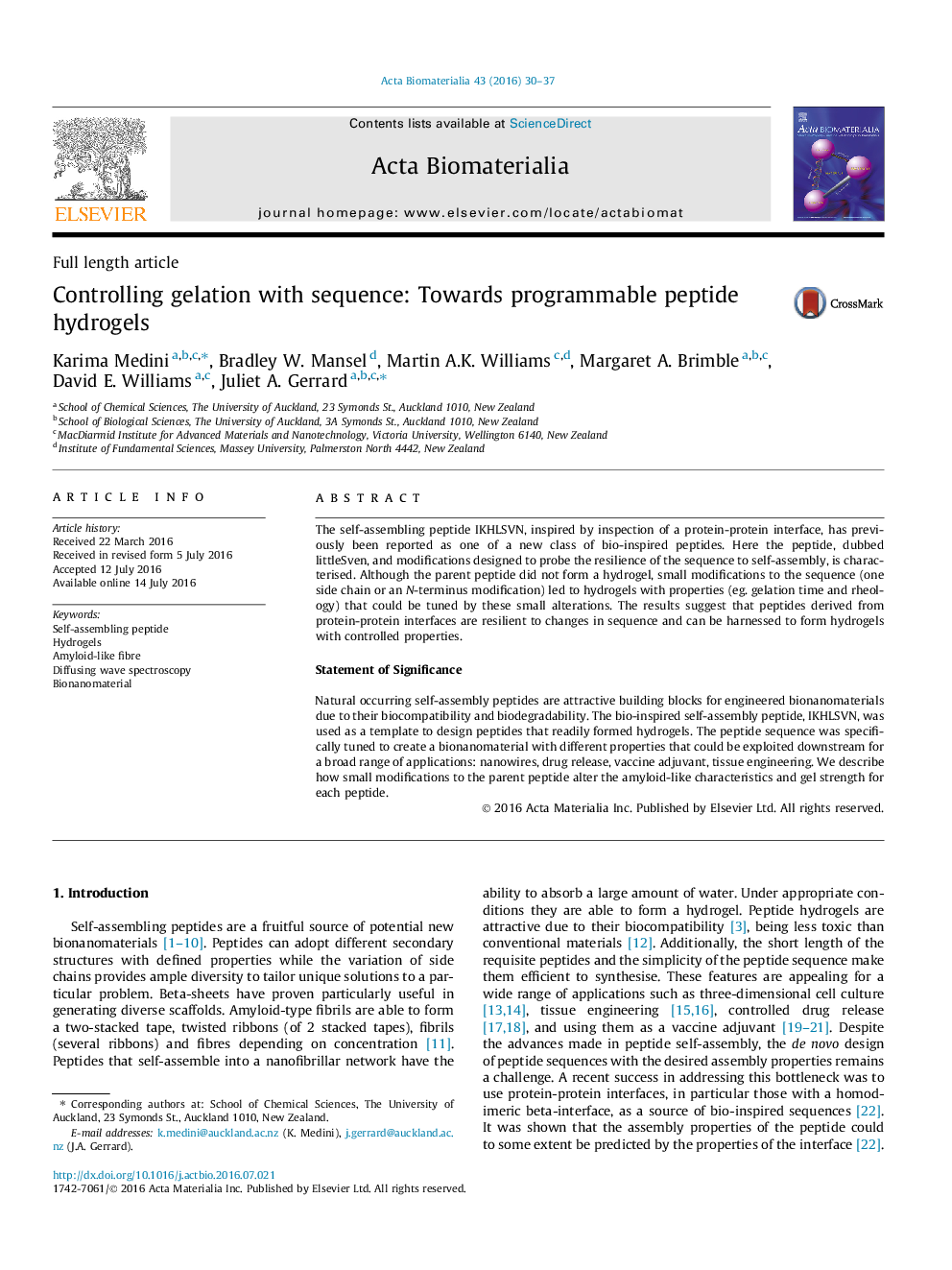| Article ID | Journal | Published Year | Pages | File Type |
|---|---|---|---|---|
| 6450054 | Acta Biomaterialia | 2016 | 8 Pages |
The self-assembling peptide IKHLSVN, inspired by inspection of a protein-protein interface, has previously been reported as one of a new class of bio-inspired peptides. Here the peptide, dubbed littleSven, and modifications designed to probe the resilience of the sequence to self-assembly, is characterised. Although the parent peptide did not form a hydrogel, small modifications to the sequence (one side chain or an N-terminus modification) led to hydrogels with properties (eg. gelation time and rheology) that could be tuned by these small alterations. The results suggest that peptides derived from protein-protein interfaces are resilient to changes in sequence and can be harnessed to form hydrogels with controlled properties.Statement of SignificanceNatural occurring self-assembly peptides are attractive building blocks for engineered bionanomaterials due to their biocompatibility and biodegradability. The bio-inspired self-assembly peptide, IKHLSVN, was used as a template to design peptides that readily formed hydrogels. The peptide sequence was specifically tuned to create a bionanomaterial with different properties that could be exploited downstream for a broad range of applications: nanowires, drug release, vaccine adjuvant, tissue engineering. We describe how small modifications to the parent peptide alter the amyloid-like characteristics and gel strength for each peptide.
Graphical abstractDownload high-res image (143KB)Download full-size image
